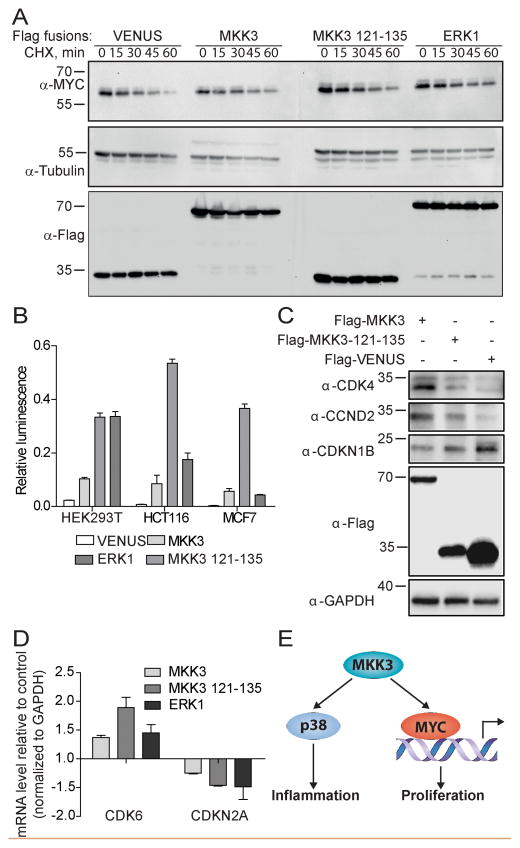Figure 6. MKK3 inhibits MYC degradation and upregulates its activity.
A) MKK3 and MKK3 121–135 MYC-binding peptide inhibit MYC degradation in HCT116 cells. HCT116 cells were transfected with Venus-Flag-MKK3, Venus-Flag-MKK3-121-135, Venus-Flag-ERK1, or Flag-Venus alone for 48h and treated with 100 mg/ml cycloxexamide (CHX) for indicated times. Western blotting was performed to reveal the level of endogenous MYC. Tubulin was used as a control. B) MKK3 and MKK3 121–135 enhances MYC transcriptional activity in HEK293T, HCT116, and MCF7 cells in MYC luciferase reporter assay. The cells were co-transfected with Venus-Flag-MKK3, Venus-Flag-MKK3-121-135, or Flag-Venus, Firefly luciferase reporter plasmid containing four E-box sites, and Renilla luciferase used as a transfection efficiency control. The MYC-transcriptional activity is expressed as the relative luminescence calculated as the ratio of luminescence produced by Firefly luciferase to the luminescence produced by Renilla luciferase C) MKK3 modulates MYC activity to control expression of cell cycle regulating genes. The level of CDK4, CCND2, and CDKN1B was determined by western blot analysis of HCT116 cells expressing Venus-Flag fusions of MKK3 and MKK3 121–135. Flag-Venus served as a background control. GAPDH was used as a loading control. Overexpression of both, MKK3 and MKK3 121–135 correlate with increased level of CDK4 and CCND2 and decreased level of CDKN1B comparing to the Venus control. D) Quantitative reverse-transcriptase PCR (qRT-PCR) analysis revealed the upregulation of CDK6 and downregulation of CDKN2A in HCT116 cells overexpressing Venus-Flag-tagged MKK3 or MKK3 121–135. Venus-Flag-ERK1 served as a positive control. The mRNA expression level is represented as the fold change of each mRNA normalized to GAPDH and relative to Flag-Venus control. E) Working model. In addition to the established MKK3/p38 pathway, MKK3 may regulate MYC activity through a direct physical protein-protein interaction.

